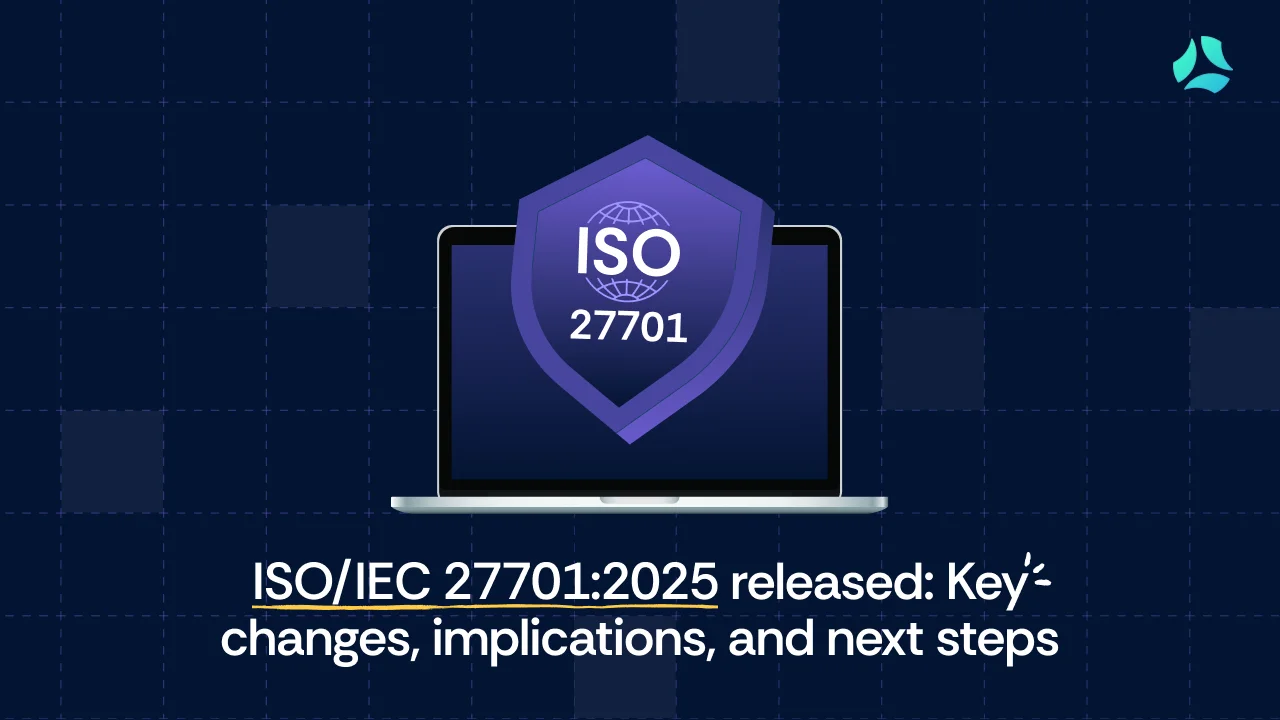The Best NIST Compliance Software for Streamlined Security Management in 2025

Compliance with NIST standards—like NIST SP 800-53 or NIST Cybersecurity Framework (CSF)—is critical for companies working with U.S. federal agencies, managing controlled unclassified information (CUI), or seeking to build a mature cybersecurity program. These standards help organizations assess risks, implement security controls, and prepare for audits.
However, achieving and maintaining NIST compliance is far from easy. The frameworks are dense and highly detailed and require continuous documentation, control mapping, and evidence collection—often across multiple departments and systems.
That’s where NIST compliance software comes in. To tackle this, many tools offer pre-configured rules, automated monitoring, and built-in risk assessments to simplify compliance and align your cloud infrastructure and IT operations with NIST frameworks. However, choosing the right NIST compliance software depends on your organization’s industry, regulatory exposure, and internal security needs.
This article will explore the top NIST compliance software solutions that balance automation and adaptability to transform compliance from a burden to a strategic advantage.
6 must-have features in good NIST compliance software
1. Automated multi-framework support
Managing compliance across multiple frameworks can be time-consuming, especially when similar security controls apply to different standards. A robust NIST compliance platform should support multiple out-of-the-box frameworks while allowing you to customize them to fit your business needs. For example, Scrut Automation offers pre-built frameworks for NIST 800-53 Revision 5, NIST AI Risk Management Framework (RMF), NIST Cybersecurity Framework (CSF) 2.0, and 100+ policies.
Also, the multi-support framework helps you align overlapping controls across multiple compliance standards—such as NIST 800-53, NIST CSF 2.0, and other industry regulations. This unifies compliance posture, helping you avoid redundant work, save time, and reduce manual effort.
2. Continuous monitoring of security controls and risks
NIST emphasizes continuous monitoring in its Special Publication 800-137, defining it as the ongoing awareness of information security, vulnerabilities, and threats to support organizational risk management decisions.
A unified monitoring dashboard helps you continuously track your security posture. It should provide real-time risk registers, visual metrics, and downloadable reports, giving you an instant, accurate view of your risk landscape.
Your software must encompass a compliance automation module that can run scheduled and on-demand scans against NIST controls. Regularly monitoring controls, assets, and artifacts will help you detect vulnerabilities, misconfigurations, and other non-compliances.
The software should also have automations for risk scoring and assessments to help you track and mitigate issues, which can risk non-compliance with NIST.
3. Automated evidence collection & audit readiness
Collecting audit evidence manually is time-consuming and prone to errors, consuming hours of the compliance team’s time. Automated evidence collection ensures your NIST compliance software integrates with various tools and stores ready-to-use evidence in a single vault, keeping organizations audit-ready at all times.
With the automated system, you can complete audits with minimal intervention and provide easy access to essential documentation.
Without automation, teams face the cumbersome task of manually collecting and organizing evidence, often leading to missed deadlines, inefficiencies, and increased risks of audit failures.
4. Third-party and supply chain risk management
Look for a tool that has comprehensive vendor risk management features to help you run vendor discovery, centralize and store evidence, and automate risk assessment.
Your platform must allow you to import vendors from your workspace, bulk upload via CSV, or onboard manually for a complete third-party ecosystem overview.
The platform should feature a vendor portal to store compliance-related documents such as vendor assessments, track mitigation tasks, etc.
Besides tracking features, an effective NIST compliance tool should automate risk profiling and assessments with automated questionnaires to determine vendor risk levels. It should also flag vendor risks, generate mitigation tasks, and track resolutions with compliance-ready audit trails.
Best NIST compliance tools: A glance
Top 5 NIST compliance software solutions in 2025
1. Scrut Automation
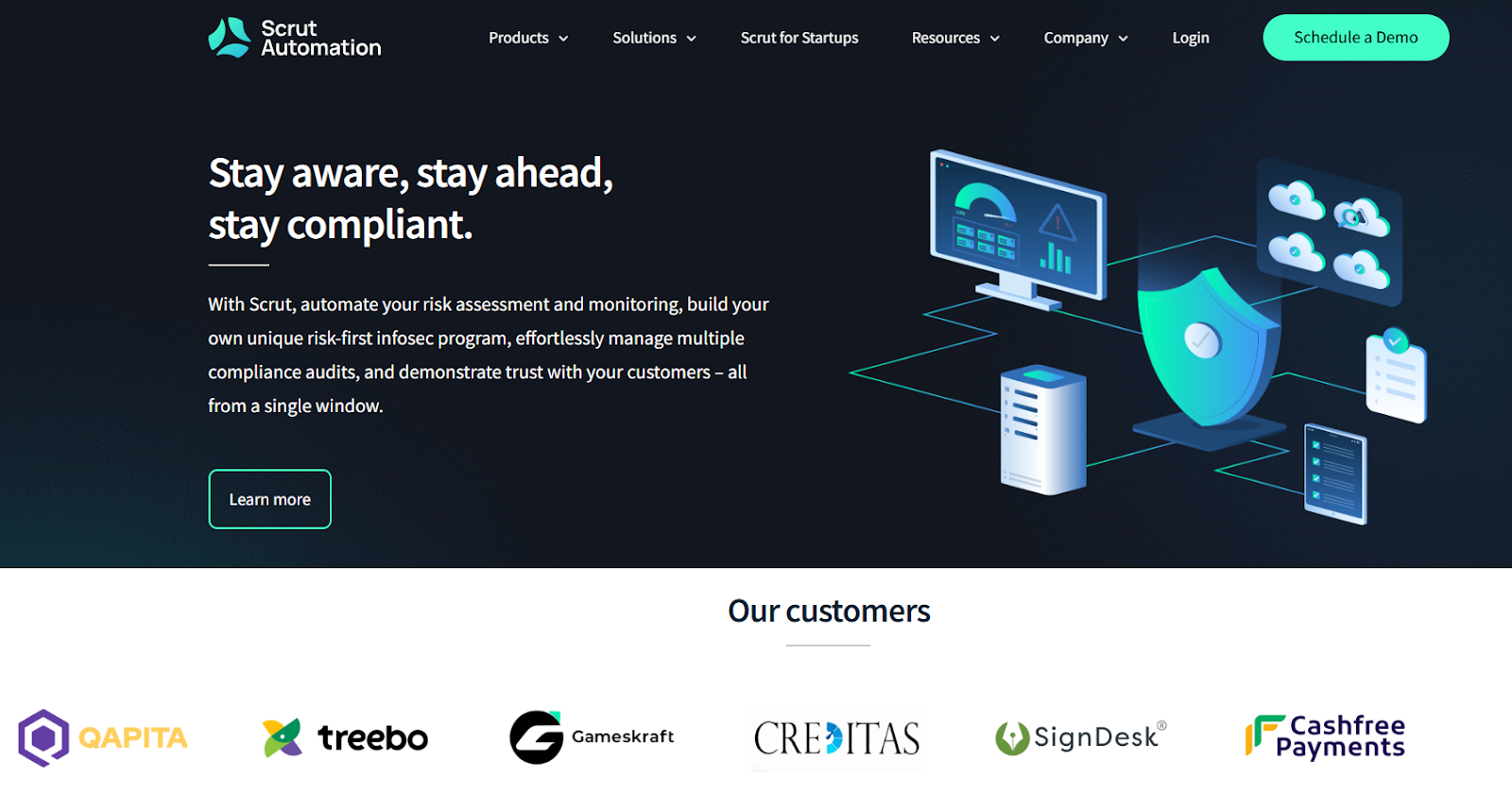
Scrut is a highly effective NIST compliance software that simplifies adhering to NIST frameworks, such as NIST 800-53 and the Cybersecurity Framework (CSF). It provides automated compliance assessments, real-time risk monitoring, and seamless integrations to simplify audit readiness and reduce manual effort.
The Scrut platform also aligns compliance efforts with proactive risk management, ensuring continuous monitoring and enhanced security posture. With its user-friendly interface and multi-framework support, Scrut empowers organizations to meet NIST requirements while maintaining operational efficiency.
Key features
1. Ready-to-use NIST workflows
Scrut has a vast library of 75+ policies mapped with 1400 controls and a risk library. The relevant policies and controls are pre-mapped to the NIST framework. Users can use this ready-to-use framework, without needing to do any extra work.
2. End-to-end risk management
- Pre-populated risk library: Scrut’s preconfigured risk library eliminates the need to build risk assessments from scratch. With industry-standard risks already mapped out, businesses can quickly identify, categorize, and assess threats without manual effort.
- Dynamic risk register: Scrut’s dynamic risk register continuously updates, offering real-time visibility into your risk landscape and allowing you to prioritize the most critical risks.
- Custom risk scoring: Scrut enhances control with custom risk scoring and assessments, enabling businesses to tailor risk evaluations based on unique operational needs.
- Mitigation risk workflows: When issues arise, Scrut seamlessly integrates mitigation workflows within the risk management framework, ensuring that identified risks are not only tracked but actively addressed with pre-configured action plans, automated task assignments, and compliance-ready audit trails.
3. Effective compliance management
The Scrut platform consolidates multiple regulatory requirements into a single set of controls, helping organizations meet their legal and regulatory obligations efficiently. It reduces the duplication of efforts, improves compliance management, and simplifies certification, auditing, and risk management processes.
Pros
- Automation efficiency: Scrut offers automation for the continuous scanning of compliance controls and risks, evidence gathering, user permissions, and reporting.
- Scalability: Users incur no extra costs as they scale their headcount or comply with new framework requirements and when they expand into new regions.
- Expert support: Access an infosec team with a combined 50+ years of experience, a network of accredited auditors, and dedicated support from CSM, who hand-hold you right from the gap assessment to audit.
Cons
- Pricing transparency: No publicly listed pricing; requires direct contact with sales for quotes.
Pricing
- Pricing follows a subscription model, offering full access to all platform functionalities within the plan—contact the pricing team for a custom quote.
- Free trial: Available, but no free version.
2. Sprinto
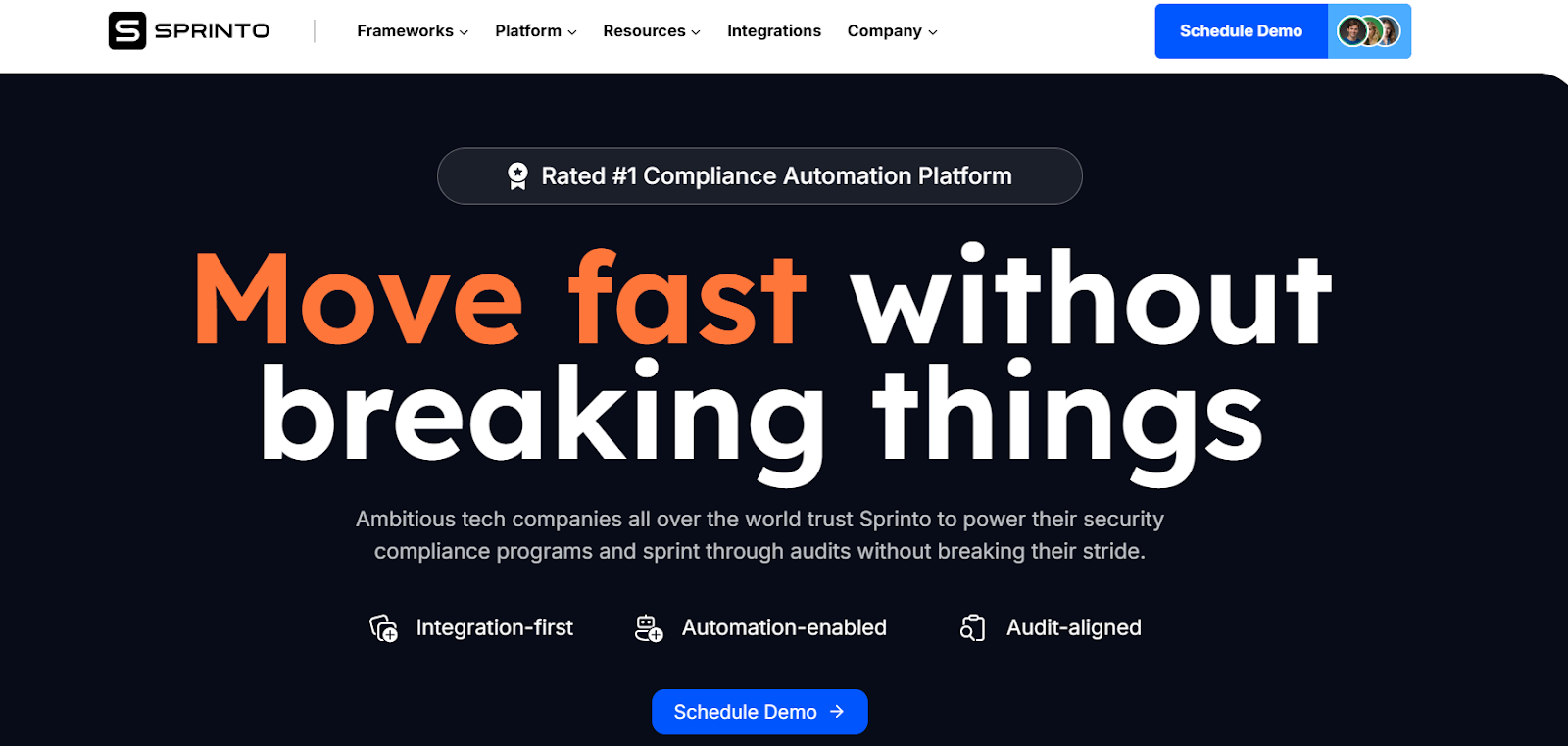
Sprinto is a NIST compliance software that automates compliance processes, reducing manual effort. It integrates with cloud services, monitors security controls, and provides real-time risk tracking. The platform offers pre-configured workflows, incident management, and audit-ready reporting, ensuring organizations stay compliant with NIST security standards.
Key features
- Automated compliance workflows for NIST CSF and NIST SP 800-53.
- Real-time risk assessment and monitoring dashboard.
- Incident management and business continuity module.
- Built-in employee training on NIST compliance requirements.
Pros
- Continuous monitoring.
- Automated evidence collection.
- Seamless cloud integration.
Cons
- Analytics could be improved.
- Limited out-of-the-box frameworks.
- Limited controls monitoring.
Pricing
Sprinto’s price ranges between $4,000 for one 1 framework (10 – 50 employees). Each additional framework adds another $1,000.
3. AuditBoard
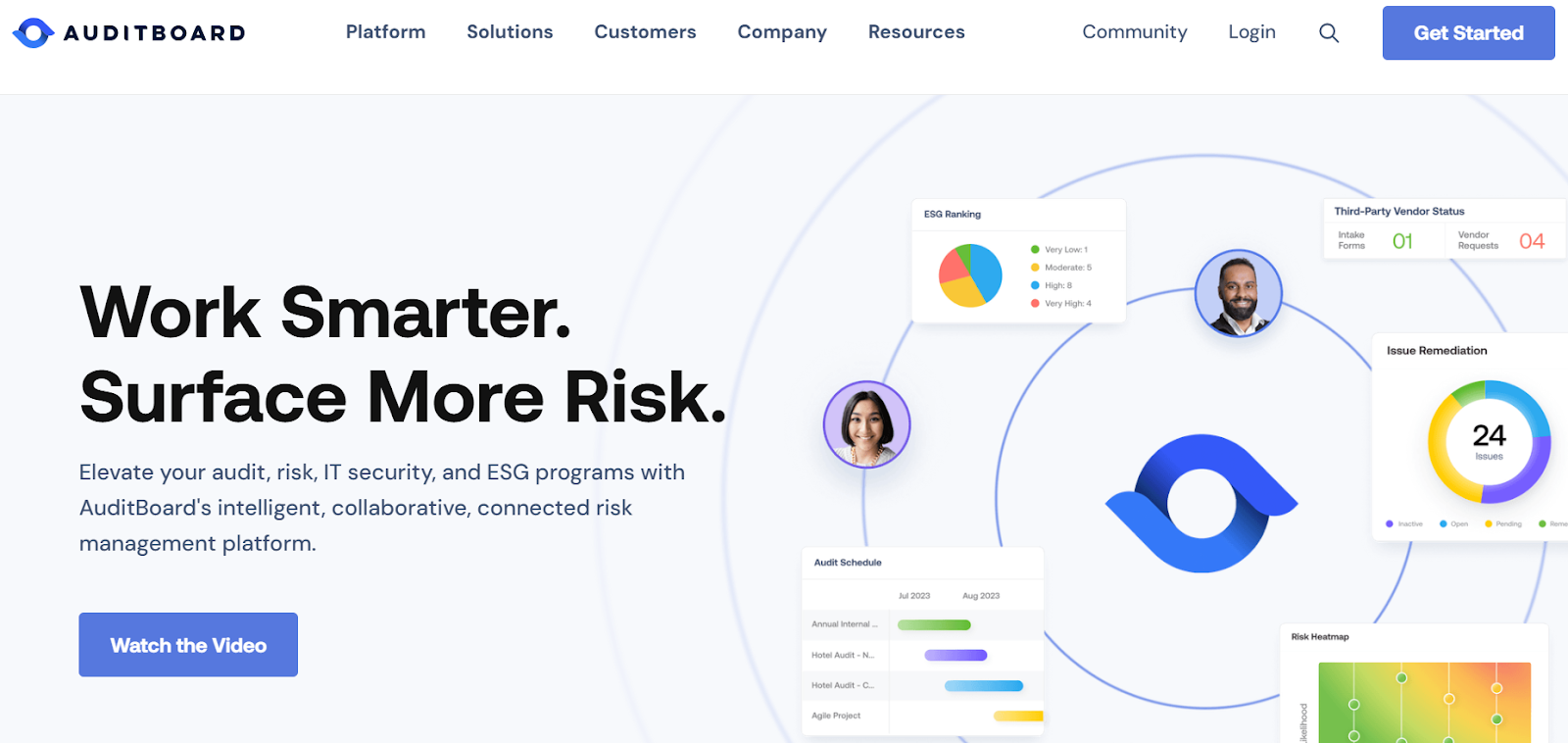
AuditBoard helps organizations assess risks, identify control gaps, and streamline NIST compliance. It includes workflow automation, collaboration tools, and audit-ready reporting for efficient compliance management.
Key features
- Customizable risk assessment modules.
- Workflow automation for repetitive compliance tasks.
- Centralized evidence collection for audits.
- Control and audit management features.
Pros
- Strong reporting capabilities.
- Flexible compliance customization.
Cons
- Limited risk assessment features.
Pricing
Auditboard offers custom pricing based on your needs. You can reach out to the team for a quote.
4. Hyperproof

Hyperproof simplifies NIST compliance by automating workflows, reducing manual tasks, and offering real-time compliance tracking. It features a centralized compliance dashboard for easy risk assessment and reporting.
Key features
- Automated evidence collection and compliance tracking.
- Real-time security monitoring and reporting.
- Centralized repository for compliance documentation.
- Built-in risk assessment tools.
Pros
- Advanced risk assessment.
- Automated workflows.
Cons
- Limited customization options.
Pricing
Hyperproof offers custom pricing based on your needs. You can reach out to the team for a quote.
5. Netwrix Auditor
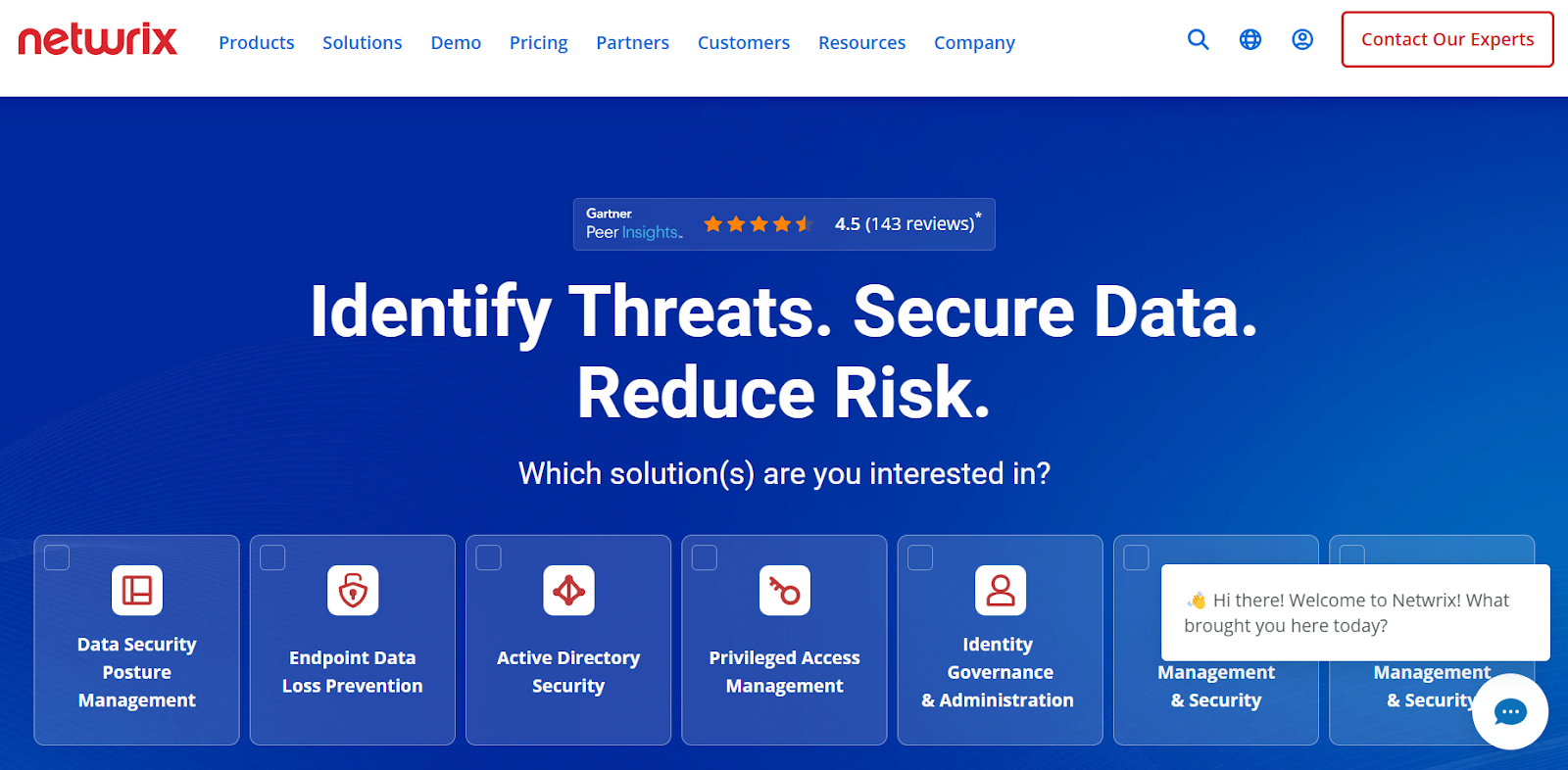
Netwrix Auditor enhances visibility into IT infrastructure, ensuring NIST compliance through risk assessments, real-time alerts, and access control management.
Key features
- Continuous security monitoring and real-time threat detection.
- Advanced risk assessment and reporting tools.
- Automated access management for securing sensitive data.
- Smart search function for quick compliance insights.
Pros
- Strong compliance tracking.
- Comprehensive evidence logging.
Cons
- Limited integrations.
Pricing
Netwrix Auditor uses a subscription model with flexible module and user options. For pricing and quotes, contact Netwrix or a partner like Insight.
How does Scrut stand out as a NIST compliance software solution?
For global businesses navigating NIST compliance, Scrut offers an automated solution with real-time risk monitoring and seamless cloud integration, enabling zero-touch audits.
The platform unifies compliance tasks, acting as a one-stop shop for multiple frameworks for NIST, ISO 27001, and SB11 (for SMBs).
Schedule a demo and see how Scrut can streamline your compliance process, reduce risk, and keep your organization secure and compliant.
Frequently Asked Questions
1. What is NIST compliance?
NIST compliance refers to following the cybersecurity guidelines and standards set by the National Institute of Standards and Technology to protect sensitive data and manage security risks. While primarily designed for federal agencies, many private organizations adopt NIST standards to strengthen their cybersecurity posture.
2. What does NIST CSF stand for?
The NIST Cybersecurity Framework (CSF) is a set of guidelines to help organizations manage and reduce cybersecurity risks. A NIST CSF platform helps automate, monitor, and streamline the adoption of these guidelines for better security posture and compliance.
3. How to get NIST compliant?
To achieve NIST compliance, implement security controls, assess risks, maintain continuous monitoring, and retain audit trails. Use compliance software like Scrut to track compliance efforts effectively. This approach helps your organization stay ahead in the risk landscape.




